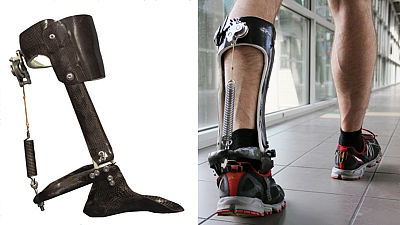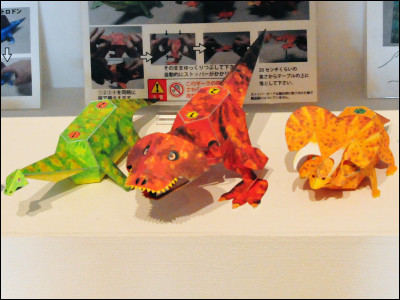Soft robotic arm inspired by mantis shrimp's punch successfully cracks egg

While we typically think of robots as being made from hard, rigid materials, soft robotics aims to build robotic devices out of more flexible materials that mimic properties found in living organisms. In one case in point, South Korean engineers have developed a soft robot capable of quick, powerful joint movements by employing the same mechanism that powers a mantis shrimp's powerful punch.
A hyperelastic torque-reversal mechanism for soft joints with compression-responsive transient bistability | Science Robotics
This mantis shrimp-inspired robotic arm can crack an egg - Ars Technica
https://arstechnica.com/science/2025/01/this-mantis-shrimp-inspired-robotic-arm-can-crack-an-egg/
There are approximately 450 known species of mantis shrimp, which can be generally categorized into two types: spearing, which stabs prey with a spear-like appendage, and smacking, which strikes prey with large, rounded, hammer-like claws. Smacking attacks are powerful punches that can reach speeds of up to 23 meters per second, generating bubbles in the water and creating shock waves. These shock waves act as a secondary blow that can stun or kill prey, and the strikes can also cause light emission, a phenomenon known as sonoluminescence .

A 2018 study suggested that the secret to the mantis shrimp's powerful punches lies not in its large muscles, but in the elastic anatomy of its arms, which resemble a bow and arrow or a mousetrap. The mantis shrimp's muscles pull on the saddle-shaped structures of its arms, causing them to flex, storing potential energy that is then released when it swings its club-like claws down.
Leveraging this structure, researchers at Harvard University reported in 2021 that they had developed a biomechanical model of the mantis shrimp's powerful appendages and built a miniature robot that mimics their movements.
A robot that can imitate a mantis shrimp's punch at a speed faster than a bullet is born - GIGAZINE

Cho Jin-cho, an engineering researcher at Seoul National University who led the research team, had been researching 'soft robot manipulators' that are often used in assembly lines for welding and painting. Cho noticed that the basic mechanism was similar to the punch of a mantis shrimp or the mechanism that allows a flea to jump high and far for its body size, based on the unexpected deformation of the shape when force was applied.
In the past, Cho's team used hyperelastic torque reversal mechanisms (HeTRMs) to build a catapult mechanism for a small flea-inspired jumping robot. 'We realized that applying these principles to soft robotics could enable new types of motion without complex mechanisms,' Cho said.

The team demonstrates the operation of a robotic arm without HeTRM and one with HeTRM, each of which was made using a combination of 3D printing and silicone molding, with the non-HeTRM robotic arm simply caressing the surface of the egg without cracking it.
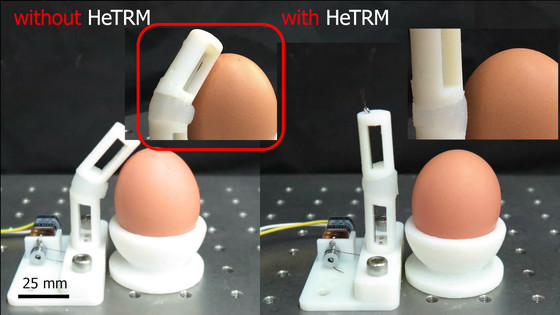
Meanwhile, the soft robot arm using HeTRM uses motors to pull tendons and uses the resulting tension to perform actions like smashing an egg, which can be seen to create cracks on the surface of the egg.
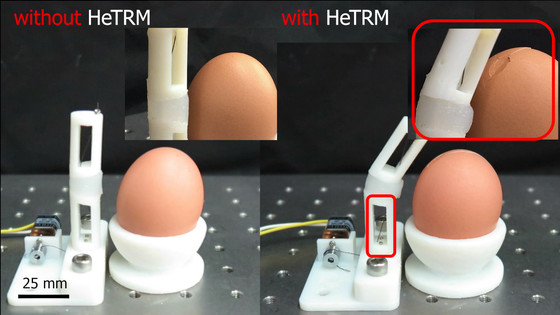
'Our robot is made of a soft, stretchy material like rubber. It has special parts inside that store energy and release it all at once, which makes the robot move at super high speeds, just like how a bent tree branch bounces back quickly or a flea jumps far,' said Cho. 'This robot can grab objects like a hand, crawl on the floor and jump high, all by pulling on simple muscles.'
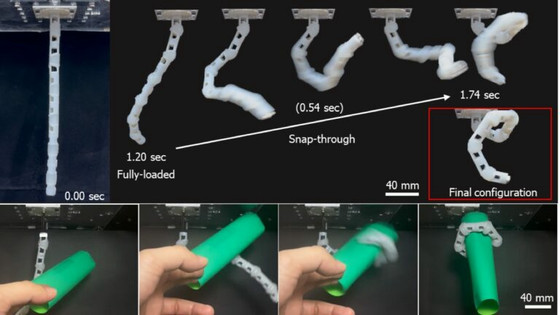
Related Posts:




